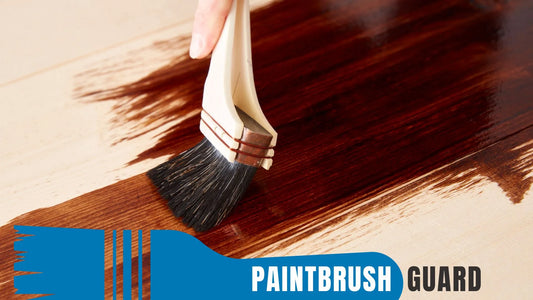Preparing walls properly is the cornerstone of a professional-looking paint job, especially for DIY beginners diving into home improvement projects.
When you prep walls for painting, you create a smooth, durable surface that ensures your paint adheres well and looks flawless.
Whether you’re refreshing a bedroom or transforming a living room, taking the time to prep walls for painting can elevate your results from amateur to expert.
This guide walks through five straightforward steps to prep walls for painting, designed to be approachable for those new to DIY painting.
Why It’s Important to Prep Walls for Painting
Taking the time to prep walls for painting is essential for achieving a high-quality finish. Proper preparation prevents common issues like peeling paint, uneven coverage, or visible imperfections that can ruin your hard work.
For beginners, the process might feel overwhelming, but these simple steps make it manageable. By following them, you’ll create a clean, even surface that allows your chosen paint color to shine, giving your space a polished, professional look.
Step-by-Step Guide to Prep Walls for Painting
These five beginner-friendly steps will help you prep walls for painting, ensuring a smooth process and a stunning outcome.
1. Clear and Protect the Room
Before you start to prep walls for painting, set up your workspace to make the process easier and protect your belongings.
Move furniture, decor, and wall hangings out of the room or to the center, covering them with plastic sheeting or drop cloths. Spread heavy-duty drop cloths over the floor to catch drips and debris.
Remove outlet covers, switch plates, and hardware like curtain rods. Use painter’s tape to cover trim, windows, and doorframes for clean lines. This initial step to prep walls for painting keeps your space tidy and prevents accidental paint splatters on surfaces you want to keep clean.
2. Clean the Walls Thoroughly
Dirt, dust, and grease can interfere with paint adhesion, so cleaning is a critical step to prep walls for painting. Start by dusting the walls with a dry cloth or a vacuum with a brush attachment to remove cobwebs and loose debris. Then, wash the walls with a mild detergent mixed with water, using a sponge or soft cloth.
In kitchens or high-traffic areas, tackle grease spots with a degreaser. Rinse the walls with clean water to remove any soap residue and let them dry completely. Thorough cleaning ensures better paint adhesion and a smoother finish when you prep walls for painting.
3. Repair Imperfections
To achieve a professional look, you need to prep walls for painting by fixing any cracks, holes, or dents. Inspect your walls for issues like nail holes, cracks, or peeling paint.
For small imperfections, apply spackling paste with a putty knife, smoothing it evenly. For larger holes, use a patching compound or drywall patch kit. Once the compound dries, typically in one to two hours, sand the area with fine-grit sandpaper until smooth.
Wipe away dust with a damp cloth. Addressing these imperfections is crucial to prep walls for painting, as it creates a seamless surface for your paint to glide over.
4. Sand for a Smooth Surface
Sanding helps create an even surface, especially if your walls have a glossy finish or minor texture. Use fine-grit sandpaper or a sanding sponge to lightly sand the walls, focusing on glossy areas to improve paint adhesion.
If your walls are already smooth and matte, a quick sanding may be enough to remove minor bumps. After sanding, wipe the walls with a damp cloth or tack cloth to remove dust. This step to prep walls for painting ensures a smooth, professional-quality surface that enhances the final result.
5. Apply Primer
Priming is a step many beginners skip, but it’s vital to prep walls for painting. Primer seals the wall, covers stains, and ensures better paint adhesion and color accuracy.
Choose a high-quality primer suited for your wall type, whether it’s standard drywall, bare wood, or a stained surface.
Apply primer with a roller for large areas and a brush for edges, ensuring even coverage. Let the primer dry completely, checking the can for drying times, which typically range from one to four hours.
Priming completes the process to prep walls for painting, creating a uniform base that makes your topcoat look vibrant and even.
Common Mistakes to Avoid When You Prep Walls for Painting
Beginners often encounter pitfalls that can compromise their paint job. One mistake is skipping the cleaning step, which leads to poor paint adhesion and a patchy finish.
Another is ignoring repairs, as unfixed holes or cracks will show through the paint.
Not using primer can result in uneven colors and the need for extra paint coats. Rushing drying times for patches or primer can also cause streaks or peeling. Avoiding these errors when you prep walls for painting ensures a smoother process and a better outcome.
Practical Tips for Beginners
To make the process to prep walls for painting easier, invest in quality tools like a sturdy putty knife, fine-grit sandpaper, and reliable painter’s tape for crisp lines.
Work in a well-ventilated area by opening windows or using a fan to reduce dust and fumes. Budget around $10 to $30 for supplies like spackle, primer, and drop cloths, and look for sales at hardware stores to save money.
Take your time with each step to avoid rushing, as thorough preparation is key to a professional-looking paint job.
Conclusion
Properly prepping walls for painting is the secret to a stunning, long-lasting finish, even for DIY beginners. By clearing the room, cleaning thoroughly, repairing imperfections, sanding, and priming, you’ll create a perfect canvas for your paint.
These five steps to prep walls for painting are simple yet effective, ensuring your home improvement project looks polished and professional. Grab your supplies, follow these steps, and get ready to transform your space with confidence.
















